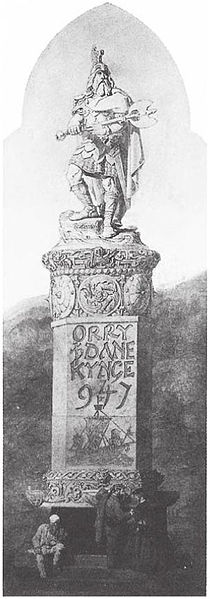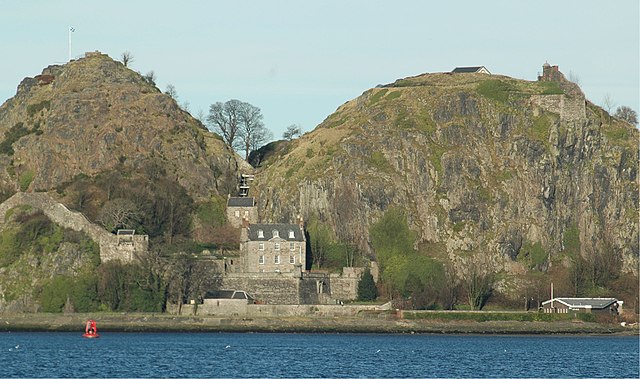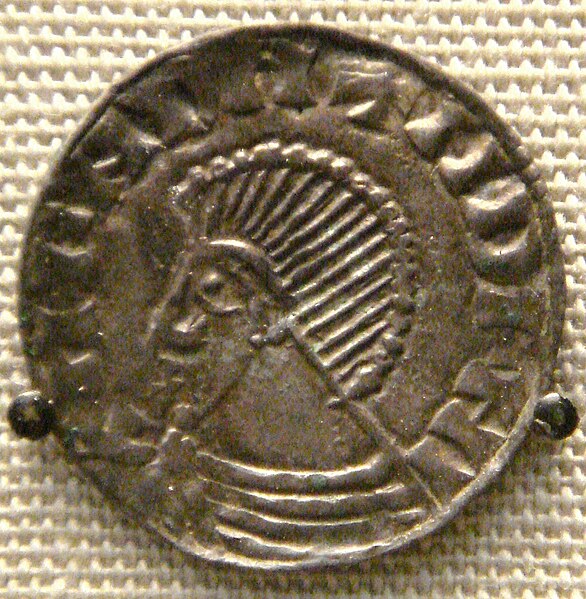Godred Crovan, known in Gaelic as Gofraid Crobán, Gofraid Meránach, and Gofraid Méránach, was a Norse-Gaelic ruler of the kingdoms of Dublin and the Isles. Although his precise parentage has not completely been proven, he was certainly an Uí Ímair dynast, and a descendant of Amlaíb Cúarán, King of Northumbria and Dublin.
Proposed mid-nineteenth-century monument to King Orry, a legendary figure who may be identical to Godred
A depiction of English infantry and Norman cavalry on the eleventh-century Bayeux Tapestry. In the course of his career, Godred appears to have battled both Anglo-Saxon and Anglo-Norman forces. The depicted infantry are shown formed in a shield wall, a tactic employed by the Norwegian-backed forces at Stamford Bridge.
Sky Hill, where Godred is said to have vanquished the Manx once and for all. According to the chronicle, some of his troops hid in the wood surrounding the hill, and his victory was achieved when they ambushed the unsuspecting Manx from the rear.
Image a
The Kingdom of the Isles was a Norse-Gaelic kingdom comprising the Isle of Man, the Hebrides and the islands of the Clyde from the 9th to the 13th centuries AD. The islands were known to the Norsemen as the Suðreyjar, or "Southern Isles" as distinct from the Norðreyjar or Northern Isles of Orkney and Shetland. In Scottish Gaelic, the kingdom is known as Rìoghachd nan Eilean. The territory is sometimes called the Kingdom of Mann and the Isles, although only some of the later rulers claimed that title. The historical record is incomplete, and the kingdom was not a continuous entity throughout the entire period. At times the rulers were independent of external control, although for much of the period they had overlords in Norway, Ireland, England, Scotland or Orkney. At times there also appear to have been competing claims for all or parts of the territory. The islands have a total land area of over 8,300 square kilometres (3,205 sq mi) and extend for more than 500 kilometres (310 mi) from north to south.

Signature page from the Annals of the Four Masters
Folio 32v of the Book of Kells which may have been produced by the monks of Iona and taken to Ireland for safekeeping after repeated Viking raids of the Hebrides.
Modern Dumbarton Castle, the site of the 9th-century siege by the Uí Ímair
A posthumous "Sihtric" coin from the British Museum, minted at Dublin c. 1050








